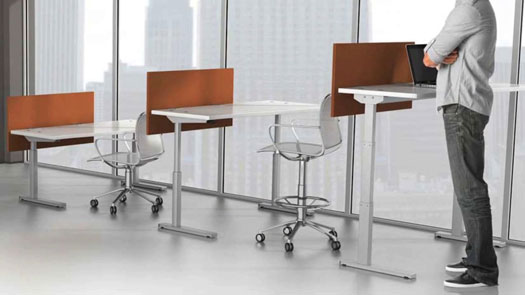Standing desks may offer some interesting health benefits
Body
‘Sitting is the new smoking” is a common new adage. James Levin, M.D., of the Mayo Clinic explains, “Too much sitting also seems to increase the risk of death from cardiovascular disease and cancer.” He adds that sitting for four rather than two hours a day in front of a TV screen increases the chance of death from all causes by 50 percent, and similar problems apply to sitting at a desk or in a car.
|
ADVERTISEMENT |
…
Want to continue?
Log in or create a FREE account.
By logging in you agree to receive communication from Quality Digest.
Privacy Policy.

Comments
Statistical Voodoo
"...sitting for four rather than two hours a day ...increases the chance of death from all causes by 50 percent"
I don't really know where to start with this but lets begin with the, hopefully undisputed, premise that the chances of dying from all causes is 100%. Further, I hope we can all agree that a 150% chance of anything is a meaningless number. Hence the claim as written is likewise meaningless.
If the intent was to indicate that there is a corelation between sitting and life expectancy, then those numbers, which I would have to assume are available, should be the stated relation.
Increased risk
The reference explains,
One study compared adults who spent less than two hours a day in front of the TV or other screen-based entertainment with those who logged more than four hours a day of recreational screen time. Those with greater screen time had:
I think what he means is that, if your risk of chest pain or heart attack would normally be 10%, your risk would be 22.5% (125% more) due to sitting. 225% means multiplication by 2.25
I am by the way up to about 6 hours a day, and I feel a lot healthier!
????
Sorry, I can't get past the absolute that I have a 100% chance of dying. When that time arrives I will, with 100% certainty, have died from some cause. Now, if I take any possible cause of death, let us call its statistical probability "p". It follows that the probability of dying from any other cause must be 100-p. If I increase the probability by 50%, that probability becomes 1.5p and the probability of dying from another cause becomes 100-1.5p. Obviously, if I repeat this exercise for another cause, the remainder will again decrement. Also obvious is the fact that while it is possible that individual causes may become more frequent, it can only be by the reduction of one or more others. Hence, any claim increasing the probability of all causes must be a statistical oxymoron.
Think of it as a reliability exercise
It's like having a part that will certainly fail after a certain number of cycles or time in service. However, if you increase the hazard rate, it is more likely that it will fail sooner. Certain behaviors like smoking, and now apparently sitting all day, increase the hazard rate for various illnesses and can therefore be expected to decrease our life expectancy.
Exactly!
My point exactly, its not how, or why, it is when....
Another option
Add new comment